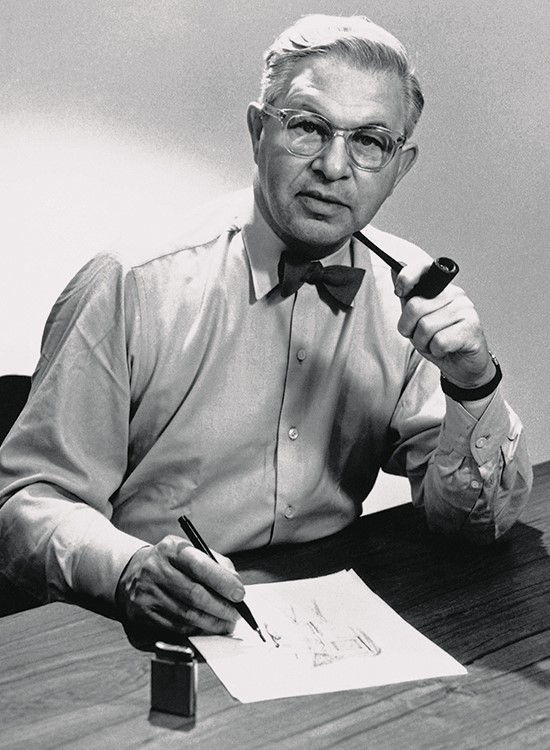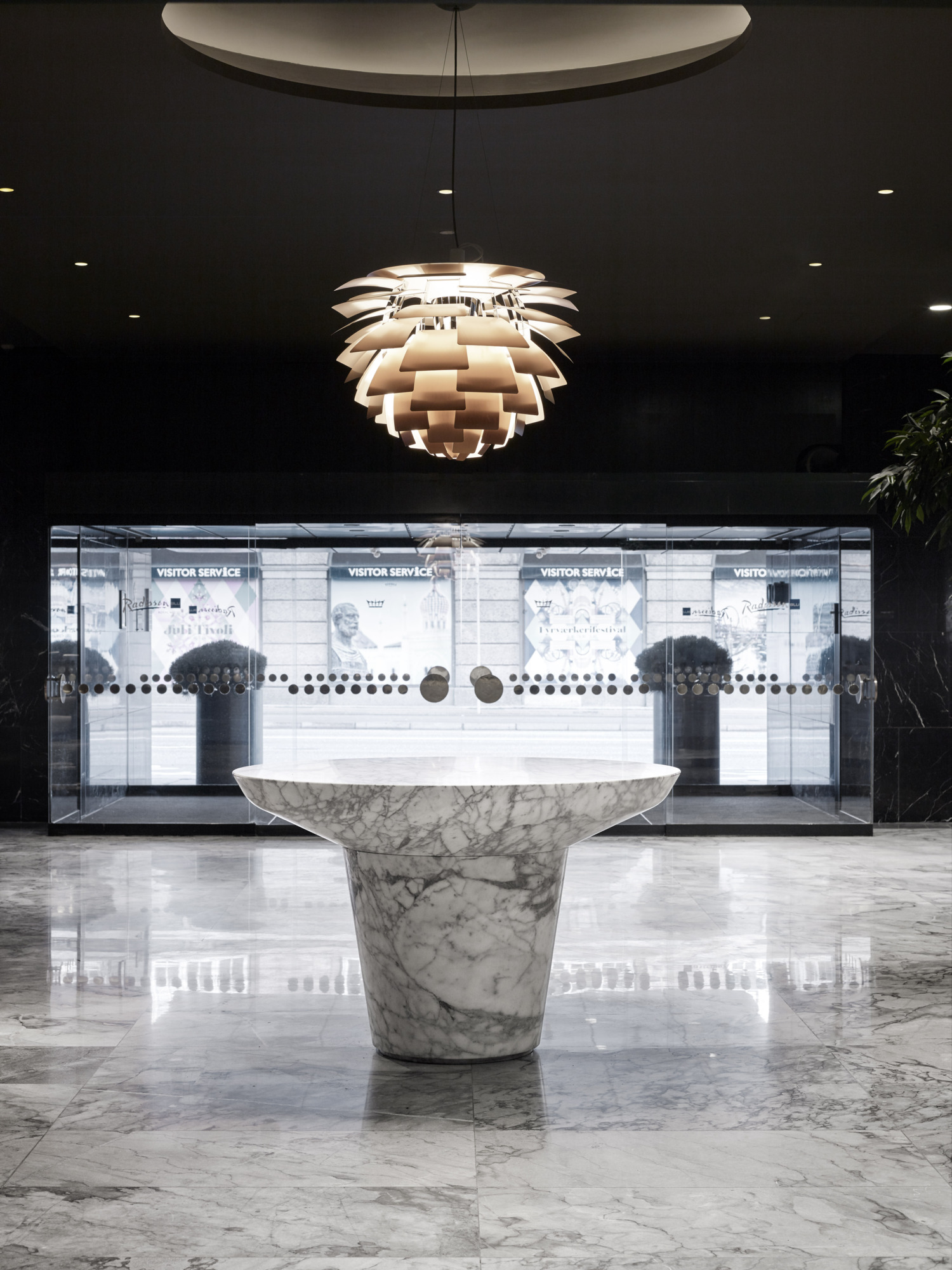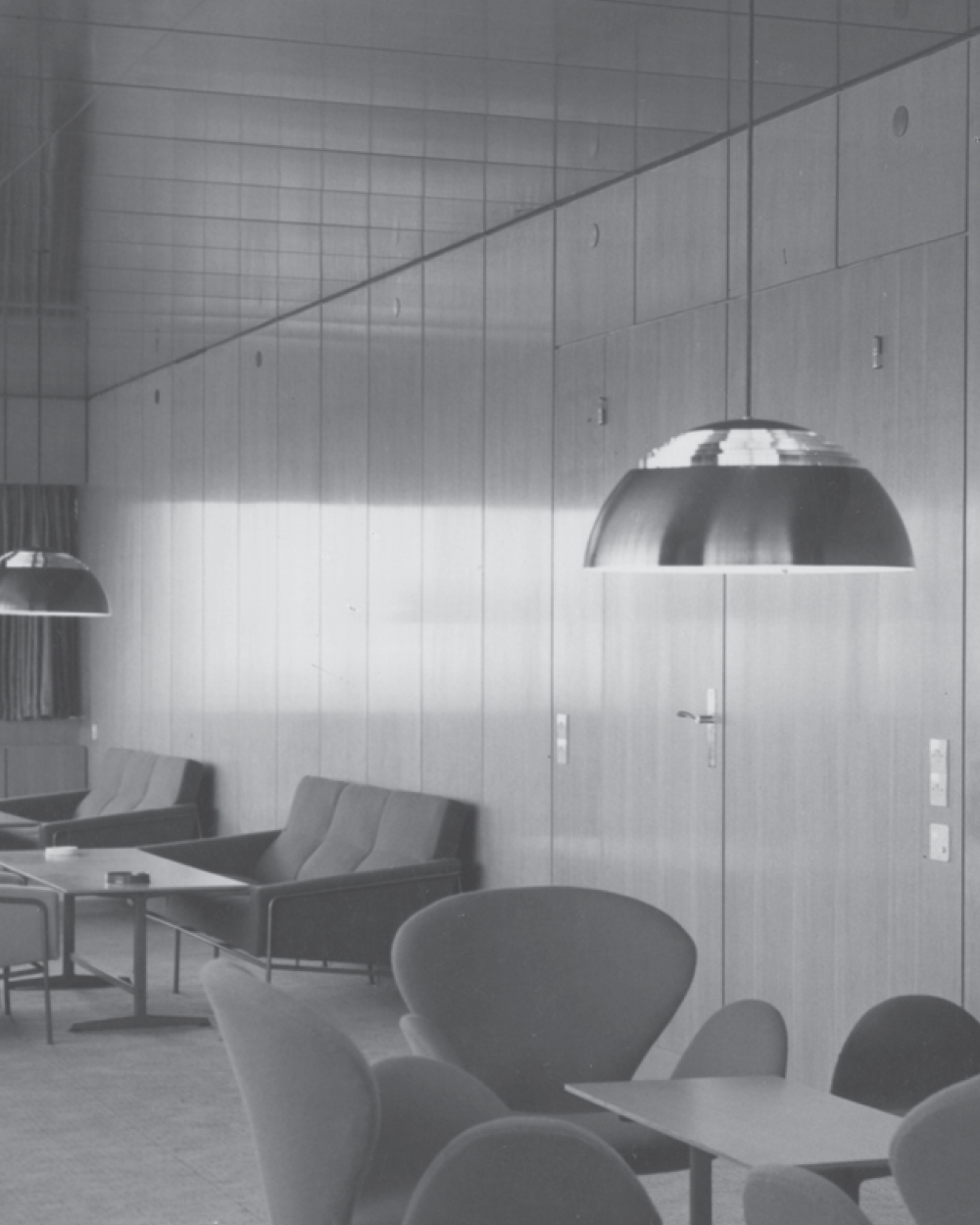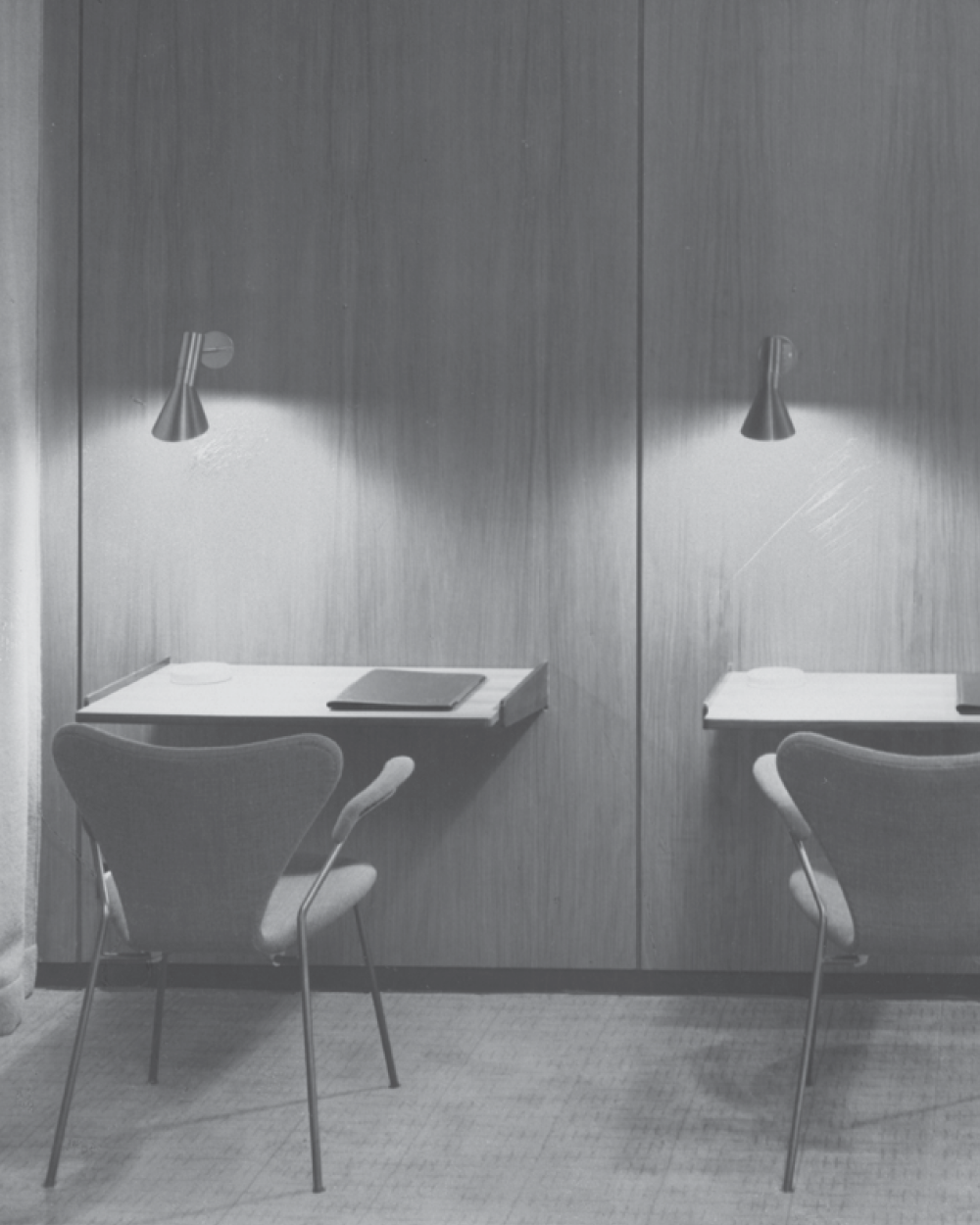The First Designer Hotel: Honoring Arne Jacobsen’s Vision
Arne Jacobsen’s ambition for the SAS Royal Hotel reached far beyond the hotel’s architecture itself. The celebrated architect meticulously designed nearly every aspect of the hotel, from the structure to the furniture and accessories.

A unique talent
In his early years, there was little indication that Arne Jacobsen would go on to become one of the most influential architects of the 20th century. As a student at Miss Adler’s School in Copenhagen, Jacobsen’s academic performance was average, and he struggled to sit still. His behavior was often disruptive during geography lessons, and he would occasionally leave math class early. However, one area in which young Arne excelled was drawing.
Arne Jacobsen’s preference for simplicity was evident even in his childhood. Growing up in a Victorian house in Østerbro, Copenhagen, surrounded by clutter, he requested that the walls of his room be painted white. This desire for minimalism, likely influenced by the independent spirit of his school, would later become the cornerstone of his design philosophy—one that embraced clean lines and modern forms.
The Enduring Charm of the Turnkey Concept at the SAS Royal Hotel
The SAS Royal Hotel was praised for its international style, yet it embraced something uniquely Danish—a balance that resonated throughout both the building’s structure and interior design. Every detail was meticulously crafted, from the sleek profile of the AJ Lamp—with its combination of straight lines and geometric angles—to the striking Series 3300 seating designs in the hotel’s lobby. These elements were not just aesthetically appealing but reflected Jacobsen's overall architectural language, where precision and geometry played pivotal roles.
The AJ Lamp collection, which includes table lamps, floor lamps, wall lamps, and pendant lights, was introduced alongside the hotel’s opening in 1960. The wall lamps, in particular, hung elegantly in rows in the hotel lobby, becoming a central feature of the space’s aesthetic. These pieces, along with the AJ Royal pendant and other iconic Jacobsen creations such as the Egg and Swan chairs, AJ handles, and cutlery, have since become legends in design history.



